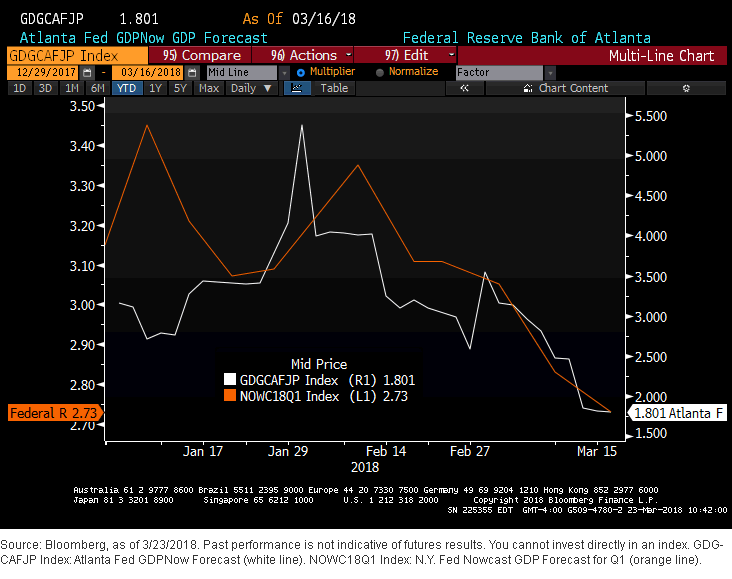U.S. Econ Watch: On Second Thought…


As I’ve written before, one of the pillars or “legs of the stool” underpinning the rise in the U.S. Treasury (UST) 10-Year yield thus far in 2018 has been the expectation of an improved growth setting. Indeed, tax cuts and increased federal government spending have created a backdrop where the U.S. economy finally has the potential to break out of the mediocre pace of growth we’ve experienced since the great recession ended in mid-2009. Now, investors will just have to sit back and wait to see if this expectation becomes a reality.
Let’s get some perspective on what the financial markets are being presented with in terms of economic forecasts. According to a Bloomberg consensus of projections, U.S. real GDP is expected to rise to +2.8% in 2018, a marked improvement from the 2017 tally of +2.3% and almost double the +1.5% pace witnessed in 2016.
In three out of the last four years, growth has come in on the softer side in the first quarter of the year. This has helped put real GDP forecasts for the entire calendar year “in the hole,” to some degree. As we began 2018, based upon a variety of forecasts, it looked as if this trend may be broken, but some of the more recent projections are now suggesting that this year may be no different and could follow its predecessors’ disappointing trend.
Atlanta Fed GDPNow GDP Forecast & N.Y. Fed Nowcast GDP Forecast for Q1 2018

Two of the more closely watched growth forecasts come from the Federal Reserve (Fed) banking system, specifically the Atlanta Fed’s GDPNow and the N.Y. Fed’s Nowcast. As clearly illustrated by the above graph, both of these measures were looking for real Q1 GDP to post some solid gains. At its peak, GDPNow was projecting growth as high as +5.4% as recently as early February. Along the same lines, the N.Y. Fed’s gauge hit a high watermark of +3.5% back in January.
Over the last month or so, both of these forecasting tools have essentially moved in one direction: down. To be sure, as of this writing, the Atlanta Fed’s measure had fallen to show a real GDP reading of only +1.8%, while Nowcast has dropped as well, but not to the same extent, with the Q1 forecast at +2.7%. The downward revisions reflect some of the softer-than-expected results for retail sales, housing starts and new home sales in the latest reports. If one were to average these two real GDP forecasts, the result would be +2.25%.
Conclusion
Does this mean that 2018 has also started off by putting calendar year growth “in a hole”? Not necessarily, but as we’ve seen, recent economic data has revealed that economic activity still has some room for improvement. From the Fed’s perspective, it would appear as if the policy makers are feeling more confident about the economy, as their own recent 2018 growth projections were dialed up 0.2 percentage points, to +2.7%, at last week’s March FOMC meeting. Unfortunately, investors will have to wait to get their first glimpse of how Q1 fared, as the Bureau of Economic Analysis real GDP release is still a month away.
Unless otherwise stated all data is Bloomberg, as of March 23, 2018.


